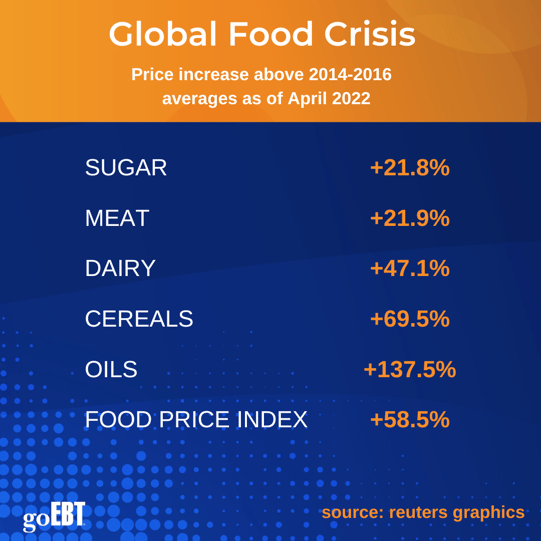Retailers are facing supply chain issues that can lead to food inventory shortages. Amidst many other issues like rising costs and labor shortages, low inventory is the last thing retailers want to deal with. Thankfully, there are ways to prevent this, according to Marketman…
4 C's Impacting Food Security
From COVID-19 to conflicts like the Russia-Ukraine war to rising costs from inflation and food supply chain issues, the last two-and-a-half years have not been easy for any of us. COVID-19 has impacted nearly every facet of our lives worldwide, but it has had a particularly strong impact on food security. World hunger and poverty has already been a major issue across the globe, and COVID-19 has only made things worse. According to the World Food Program (WFP) the number of severely food-insecure people has doubled since the pandemic from 136 million people to 276 million people and is estimated to rise to 323 million people by the end of 2022. Here are the main factors that have led us to the verge of a hunger catastrophe...
COVID-19
Prior to COVID, approximately 11% of households were food insecure, a number that is now approximately 15%. The pandemic has also caused major issues in the food supply chain that have led to substantial price increases, supply shortages, and transportation issues. These continuing COVID-19 challenges and supply shortages could send 9.3 to 13.6 million children into acute malnutrition this year.
CLIMATE SHOCK
Climate shock occurs when an event or natural disaster disrupts the sustainability of a community. Changes in climate impact farming and agriculture which in turn disrupts the food supply chain. A study from PLOS noted that 71% of households reported experiencing climate shock and that these households were 1.73 times more likely to be food insecure.
CONFLICT
Conflict is the largest contributing factor, with 60% of hungry people in the world living in conflict-afflicted areas. One of the more recent conflicts being Russia’s invasion of Ukraine, who is a major wheat supplier that millions depend on. As of May 2022, the World Food Program estimates that 1 in 3 households across the Ukraine are now food insecure.
COST OF FOOD + FUEL
An unprecedented jump in food prices of 13% occurred in March of 2022. The price of wheat and oil has increased as much as 300% in areas like Africa and the Middle East, driven by the fact that Russia and Ukraine account for 24% of global wheat exports.
Other notable increases include:

Thankfully, the USDA and many other organizations are working hard to combat food insecurity. You can read more about the USDA Food System Transformation Framework here to learn how the USDA intends to address supply chain issues and food insecurity.
Make a Difference in Your Community
Join the fight against hunger by accepting EBT in your store. By doing this you increase access to fresh, nutritious foods to those who don’t otherwise have access. 1 in 8 people in the United States are SNAP recipients, which means there is probably a large number of SNAP recipients in your community. By accepting EBT, you not only increase business by opening your doors up to a new group of customers, but you also become an essential community pillar. Local stores and businesses are the go-to for SNAP recipients in more rural areas that are not close to major supermarkets!
Learn more about stocking requirements and how to become a SNAP retailer.




